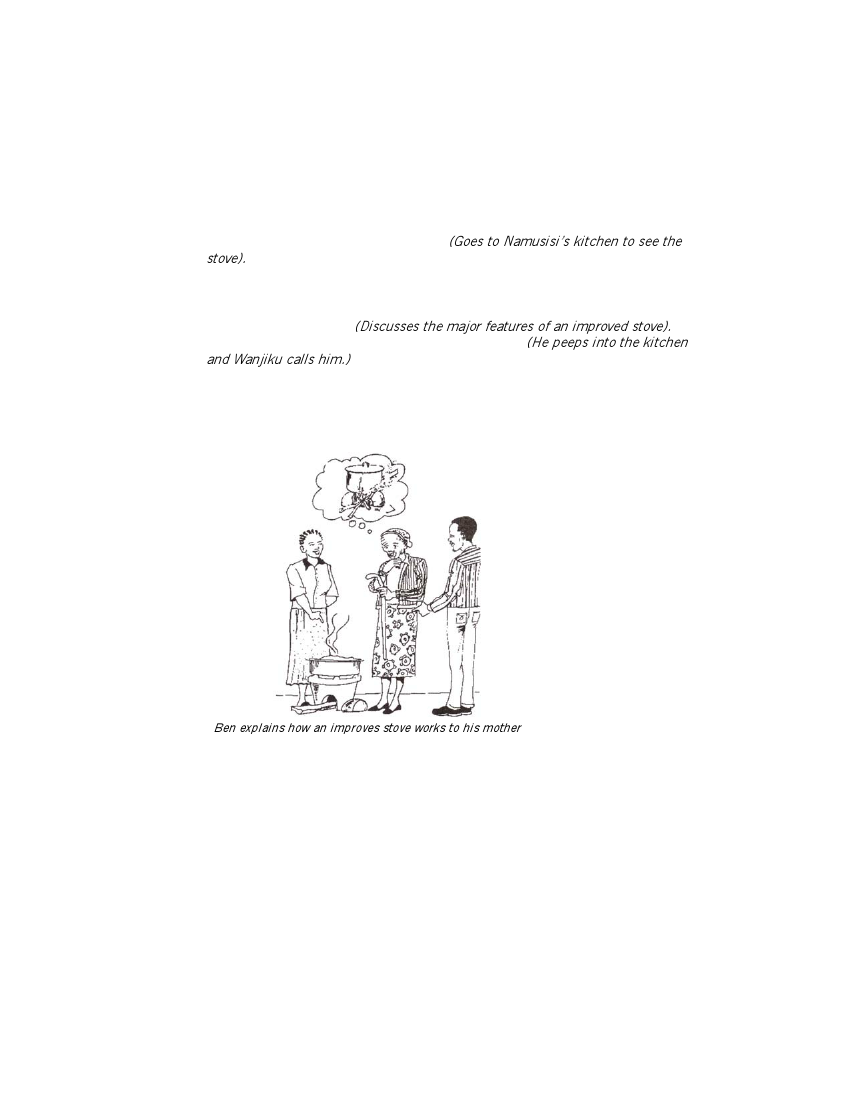
It is the rainy season and the family lives in a village known as Bbira in Uganda.
Narrator
Wanjiku:
Namusisi:
Wanjiku:
Namusisi:
Wanjiku:
Namusisi:
Ben:
Wanjiku:
Ben:
Why are you not using the three-stone fire Namusisi?
You will not have a long lasting marriage if you do not use it.
Although I carried the three stones from my parents’ home, I have kept them
beside the “sanifu” stove that I use.
What do you mean by a “sanifu” stove? (Goes to Namusisi’s kitchen to see the
stove).
“Sanifu” means “improved”. This stove cooks food faster, uses less fuel wood
and produces less smoke. You spend less time collecting firewood.
But tell me, what is the difference between this stove and the three-stone fire?
Ah! Ah! Let me explain. (Discusses the major features of an improved stove).
Namusisi, is food ready? I am very tired and hungry. (He peeps into the kitchen
and Wanjiku calls him.)
Ben, come and see this! Do you know hat your wife uses to cook?
Oh mother, you like the stove? I made it for her. I can also make one for you in
your kitchen. Your friends might see it and like it too. (he goes on to explain
about the materials required to make the stove).
Namusisi:
All:
Ben explains how an improves stove works to his mother
You also need to identify where the stove should be located in the kitchen so
that it works efficiently.
A well-utilised stove saves time.
User’s notes
Key issues to be emphasised include the location or positioning of the stove, materials for making it, the
benefits of using it, labour required to build it and the basic features of an improved stove.
Activity 2
Identification of stove technology designs and assessment of their appropriateness
23